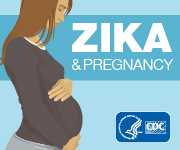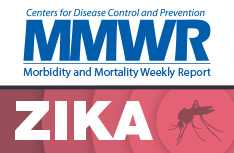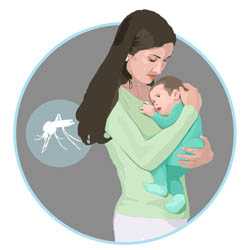Zika-Related Birth Defects Surveillance
Tracking birth defects that might be related to Zika virus infection will help provide a better understanding of the effect of the Zika virus infection during pregnancy.
CDC supports 50 state and local areas to track and collect information about babies born with microcephaly and other birth defects that might be associated with Zika virus infection during pregnancy. These jurisdictions use a consistent case definition to rapidly collect information on all infants who have these birth defects, including those who might have birth defects for reasons other than Zika virus infection during pregnancy. The information will be used to understand the full range of health effects associated with Zika. It can also be used to recognize the effect of these conditions on communities and help connect families to local medical and social services.
Tracking Birth Defects
State and local birth defects surveillance systems are collecting information about birth defects thought to be related to Zika virus infection. Examples are brain abnormalities, including microcephaly, eye defects, hearing loss, or other problems resulting from damage to the brain that affects nerves, muscles, and bones, such as clubfoot or inflexible joints. For a full list of the birth defects of interest, visit the Pregnancy Outcomes page.
Data Collection
Birth defects surveillance systems may use different methods to find babies with birth defects and confirm the diagnoses. To enable a standard comprehensive approach for gathering information on Zika, CDC is supporting 50 state and local jurisdictions to establish and enhance population-based birth defects surveillance programs by using active case-finding methods and standard case definitions.
- Population-based birth defects surveillance means that information is collected on all infants who have birth defects that might be related to Zika. This includes infants who have not been exposed to Zika virus and might have the same birth defects for other reasons. This helps to identify the full spectrum of outcomes associated with Zika virus infection.
- Active case-finding means that staff continually review medical records, usually from multiple healthcare facilities in a given geographic area that diagnose and care for children with birth defects. For each birth defect case identified during these reviews, the staff collect information about both the mother and the baby. This approach can be time and resource intensive but can yield more accurate and detailed information needed to understand the different types of brain and central nervous system defects that might be related to infection with Zika.
- Consistent case definitions help programs collect data in a consistent, systematic way and help ensure that data collected from various geographic areas can be compared in a meaningful way.
What CDC Does with the Data
CDC uses the Zika-related birth defects surveillance data to understand disease patterns, risk factors, and effects on populations and communities, inform prevention activities, and connect families to health and social services.
Understand disease patterns and risk factors
The data collected from birth defects surveillance systems can be used to track the frequency and severity of birth defects among infants with and without exposure to Zika virus. This data can also help identify the types of birth defects that are more common in infants who were exposed to Zika virus and the subpopulations that are most affected by Zika-related outcomes.
Understand effects on populations and communities
State and local birth defects tracking systems provide important data to find out who in a population is affected by birth defects that are potentially associated with Zika virus infection. This information can serve as a foundation to link with other data to better understand the effect of Zika virus on communities. The information can also be used to track the effects of these conditions over time.
Inform prevention activities
The data from birth defects surveillance systems close a gap in reporting pregnancy outcomes related to Zika. If a mother is not diagnosed with Zika virus prenatally, her infant may not be included in CDC’s Zika pregnancy registries (the US Zika Pregnancy Registry and the Zika Active Pregnancy Surveillance System). By following all infants with birth defects that are potentially related to Zika virus infection, data is collected on a wider range of infants. The data gathered through these systems on mothers and infants will help improve prevention of Zika virus infection during pregnancy and help researchers study the full range of other potential health problems.
Connect families to health and social services
Because the types of services needed to care for infants with birth defects can be complex, CDC recommends coordinated care and early intervention services. Birth defects surveillance systems provide one way to identify and refer infants born with birth defects, including those that may be caused by Zika virus infection, for services they need as early as possible.
- For CDC’s guidance on caring for infants with congenital Zika virus infection, visit Resources and Guidance for Healthcare Providers Caring for Infants Affected by Zika Virus
- For resources, visit Resources for Families of Newborns Affected by Zika.
- Page last reviewed: August 30, 2017
- Page last updated: August 30, 2017
- Content source:





 ShareCompartir
ShareCompartir
